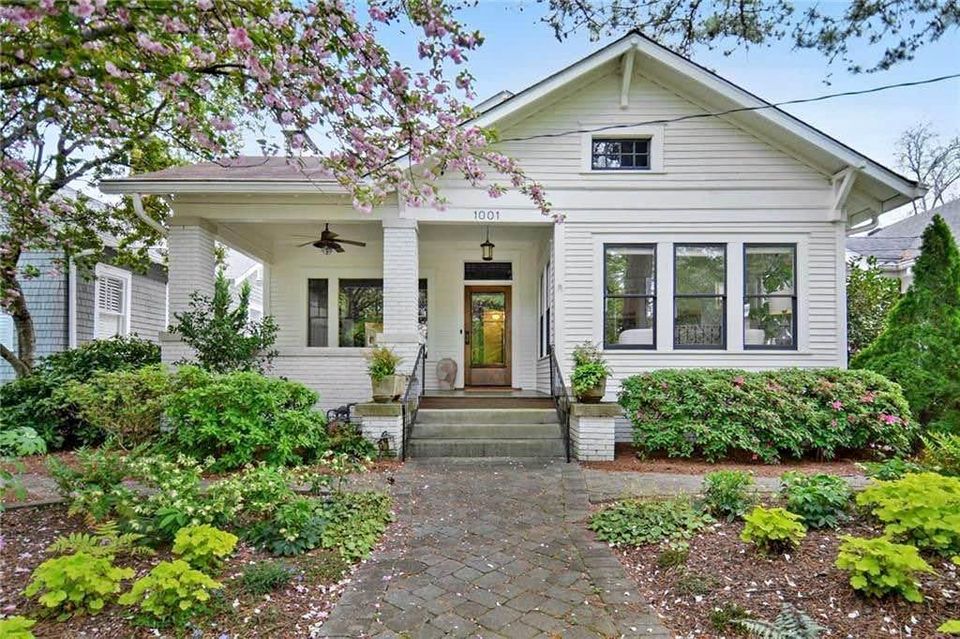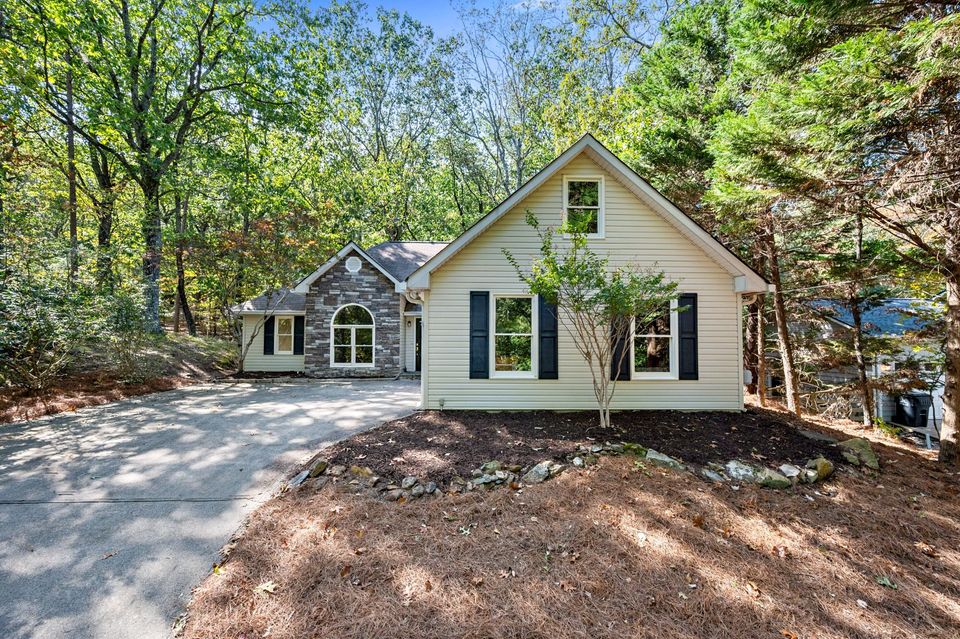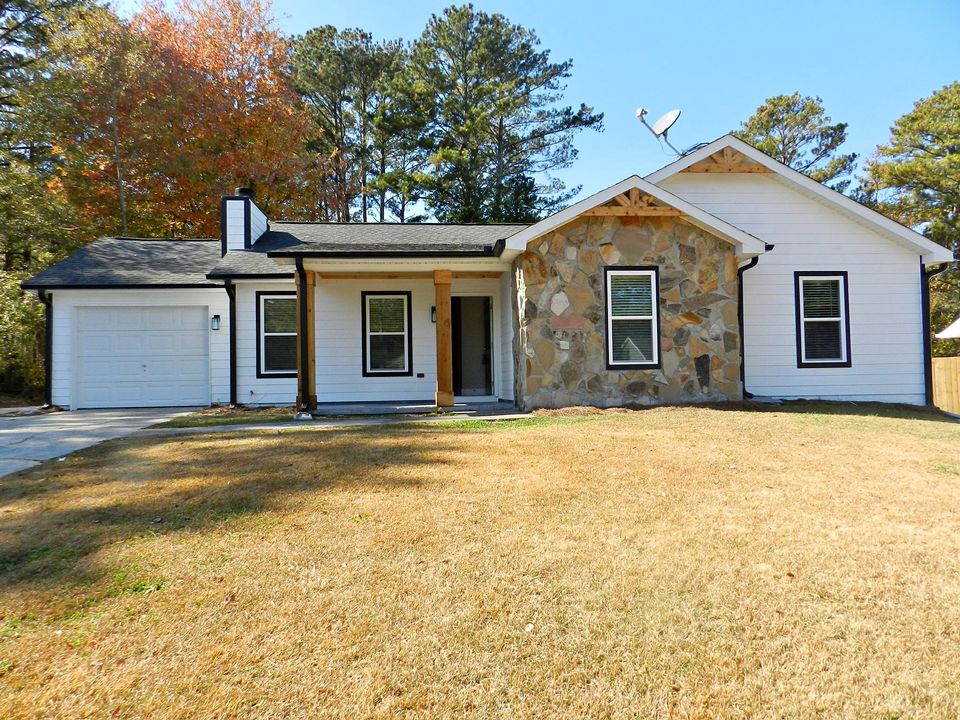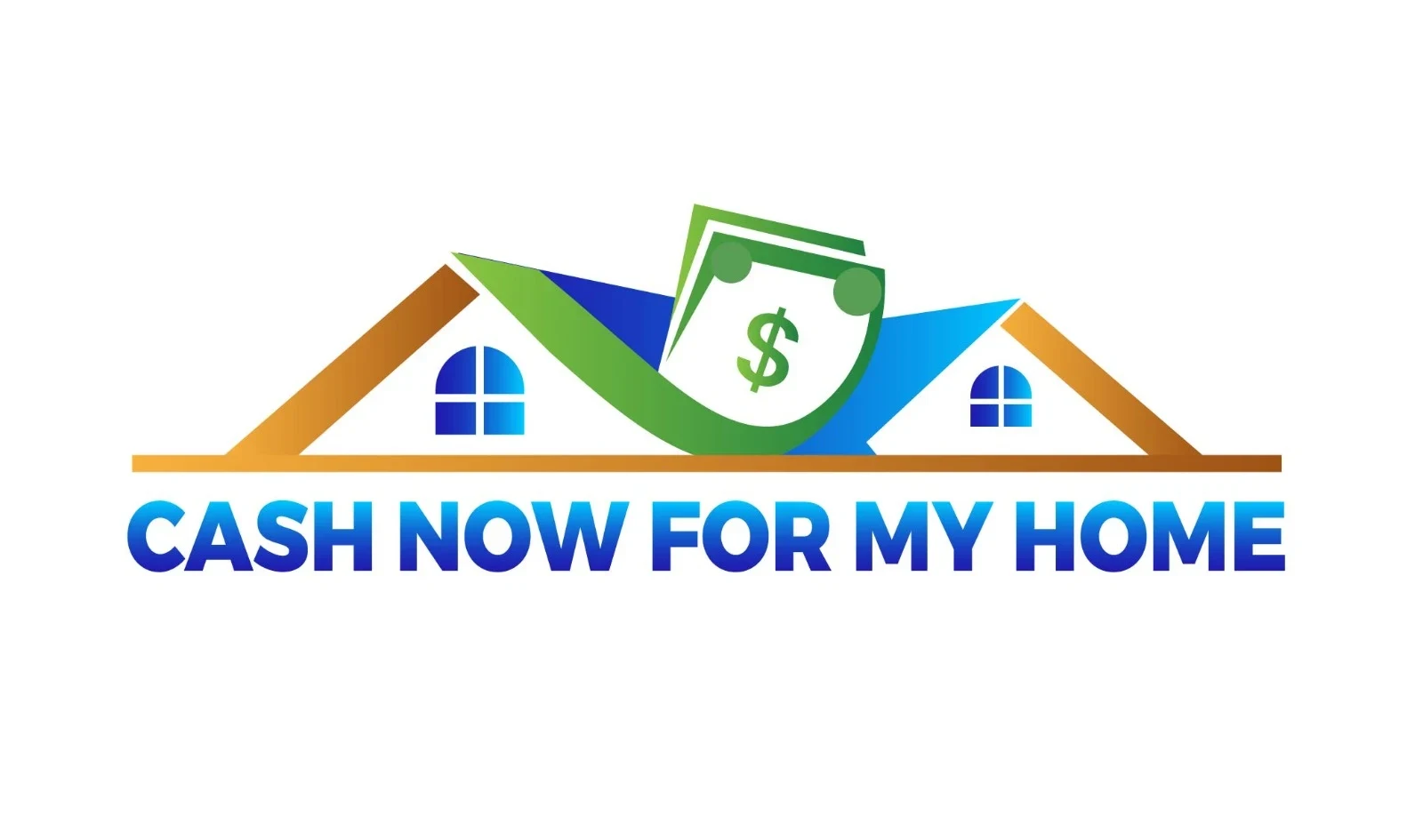Let’s delve into the world of stick-built homes, an age-old construction method that has stood the test of time. Originating from ancient timber-framed structures, stick-built homes have evolved to become a popular choice for modern homeowners seeking durability and customization. This construction technique involves assembling a home on-site by piecing together individual lumber components. This type of construction offers flexibility in design and layout.
Stick-built homes boast a rich historical context dating back centuries when skilled craftsmen meticulously crafted dwellings using locally-sourced materials. Today, this traditional approach continues to thrive as it seamlessly integrates with contemporary building. However, it still maintains its classic charm. In this post, we’ll explore the enduring appeal of stick-built homes and uncover the distinctive advantages they offer in today’s housing landscape.

Defining Stick-Built Homes and Their Significance
Traditional Construction Methods
Stick-built homes are constructed on-site from scratch using traditional building methods. This means that each part of the home is built piece by piece. This allows for customization and flexibility in design. For example, the walls are built by assembling individual wooden studs, giving builders the freedom to create unique layouts and designs for each home.
These homes are known for their durability due to the use of high-quality materials such as solid wood framing. Unlike prefabricated or modular homes, stick-built homes offer a higher level of structural integrity since they are assembled directly at the construction site according to specific architectural plans.
Withstanding Various Weather Conditions
One significant advantage of stick-built homes is their ability to withstand various weather conditions. Thanks to their sturdy construction, these homes can endure strong winds, heavy snow loads, and other environmental factors without compromising their structural integrity. For instance, in areas prone to hurricanes or tornadoes, stick-built homes have proven to be resilient against extreme weather events.
Another benefit is that homeowners can easily make modifications or additions over time due to the inherent flexibility in design offered by stick-built construction. Whether it’s adding an extra room or expanding living spaces, these alterations can be seamlessly integrated into the existing structure without major constraints.
Pros and Cons
Pros:
Customization: Stick-built homes allow for personalized designs tailored to individual preferences.
Structural Integrity: They offer long-lasting durability compared to some other types of construction methods.
Resilience: These houses can withstand various weather conditions effectively.
Cons:
Construction Time: Building a stick-built home may take longer than constructing pre-fabricated houses.
Cost: The customization and quality materials used in stick-built construction may lead to higher initial costs.

Stick-Built vs. Modular Homes: Understanding the Differences
Construction Process
Stick-built homes are constructed on-site, piece by piece, while modular homes are pre-fabricated in sections off-site. This means that stick-built homes are built directly on the plot of land where they will stand. In contrast, modular homes are assembled from different modules or sections that have been manufactured in a factory setting and then transported to the site for final assembly.
The construction process for stick-built homes involves a different approach compared to modular homes. Each component of a stick-built home is carefully crafted and fitted together on-site, allowing for greater attention to detail and customization during the building process. On the other hand, modular homes are constructed using standardized modules, which may limit design flexibility and customization options.
Customization and Design Flexibility
Stick-built homes offer more versatility than their modular counterparts. Homeowners have the freedom to work closely with architects and builders to create unique floor systems and layouts tailored to their specific preferences. This level of personalization allows for a truly one-of-a-kind home that reflects individual tastes and lifestyle needs.
Stick-built homes provide more design flexibility compared to modular homes due to their construction method. Since each part of a stick-built home is assembled on-site, adjustments can be made throughout the building process based on evolving design choices or unforeseen circumstances. This adaptability ensures that homeowners can make real-time decisions about aspects such as room sizes, window placements, or architectural details without being constrained by predetermined module dimensions.
The Cost Factors of Building Stick-Built Homes
Labor, Materials, and Location
The cost of stick-built homes is significantly influenced by various factors. Firstly, the labor, materials, and location play a pivotal role in determining the overall cost. For instance, labor costs vary depending on the region where the home is being built. Similarly, materials like lumber and other construction supplies can fluctuate in price based on market conditions and availability.
Moreover, the location of the construction site also impacts costs. Building a stick-built home in an urban area might require higher labor expenses compared to constructing it in a rural setting due to accessibility issues and local regulations.
In terms of materials, certain regions may have specific building codes or requirements that could affect both material selection and associated costs. For example, areas prone to hurricanes or earthquakes might necessitate more expensive building materials to ensure structural integrity.
Customization and Personalization
Another factor affecting the cost of stick-built homes is customization and personalization. Unlike modular homes that are prefabricated with limited customization options, stick-built homes offer greater flexibility for homeowners to personalize their living spaces according to their preferences.
This means that individuals who opt for extensive customizations such as unique architectural features or non-standard layouts will likely incur higher construction costs than those who choose standard designs without many alterations.
For instance, adding special design elements like intricate moldings or unique window shapes can increase both material expenses (due to specialized products) as well as labor costs (for skilled craftsmanship).
Quality of Materials
The quality of materials used also plays a crucial role in determining the cost of stick-built homes. Opting for high-quality building materials often comes with a heftier price tag but can result in long-term savings through reduced maintenance needs and increased durability.
Choosing superior-grade lumber over lower-quality alternatives may initially raise construction expenses but can lead to better structural integrity over time while reducing repair expenditures down the line.
Similarly, selecting top-tier insulation materials may contribute to upfront expenditures but ultimately result in enhanced energy efficiency which translates into lower utility bills over years

Advantages of Opting for Stick-Built Homes
Greater Customization
Stick-built homes offer greater customization compared to other types of construction. This means that homeowners have the flexibility to design their homes according to their specific preferences. For example, they can choose the layout, size, and features that best suit their lifestyle and needs. Whether it’s adding extra rooms, incorporating unique architectural elements, or selecting specific materials for finishes, stick-built homes provide the opportunity for homeowners to create a truly personalized living space.
Furthermore, this customization extends beyond just the aesthetics of the home. Homeowners also have the freedom to integrate smart home technology, energy-efficient features, and other modern amenities into their stick-built homes. As a result, they can tailor their living environment to align with contemporary trends and advancements in home construction.
Because stick-built homes are constructed on-site from scratch rather than being assembled from pre-made components like modular or prefabricated homes, there is more room for adjustments during the building process. This allows for real-time modifications based on individual preferences or evolving ideas as construction progresses.
Higher Resale Value
One significant advantage of choosing a stick-built home is its higher resale value. Due to their unique designs and craftsmanship tailored to individual specifications during construction, these homes tend to stand out in the real estate market. Potential buyers often appreciate the attention to detail and quality associated with custom-designed stick-built properties.
Moreover,
Stick-built houses generally command higher prices per square foot due to their customized nature.
The ability of homeowners to oversee every aspect of construction ensures that only high-quality materials are used throughout which contributes significantly towards increasing resale value over time.
In addition,
The uniqueness of each stick-built property sets them apart from mass-produced alternatives such as tract housing or prefabricated dwellings.
This distinctiveness makes them more desirable among buyers seeking a one-of-a-kind residence that reflects individual tastes and requirements.
Full Control Over Construction Process
Opting for a stick-built home provides owners with full control over every aspect of the construction process – from initial planning stages through completion. This level of involvement allows homeowners not only input into design choices but also oversight regarding material selection and building techniques.
Challenges and Disadvantages of Stick-Built Homes
Weather Delays
Stick-built homes are susceptible to weather delays during on-site construction. Inclement weather, such as heavy rain or snow, can significantly slow down the building process. This not only prolongs the construction timeline but also increases the overall cost due to additional labor hours and potential material damage. For example, if a heavy rainstorm hits a construction site where a stick-built home is being erected, it could lead to days or even weeks of delay until the weather clears up.
On top of that, these weather delays can cause frustration for homeowners who are eagerly waiting to move into their new property. The uncertainty surrounding completion dates due to unpredictable weather conditions can be quite stressful for those involved in the project.
Disruptions in Surrounding Area
The on-site nature of stick-built home construction can result in disruptions within the surrounding area. Noise from machinery and tools, increased traffic from delivery trucks, and debris accumulation are common issues associated with traditional on-site building methods. These disruptions may inconvenience neighbors and affect local businesses if the construction site is situated within a residential or commercial area.
Furthermore, nearby residents might experience disturbances due to dust and dirt generated during excavation work or foundation laying processes. These disruptions have the potential to strain relationships between builders and neighboring communities.
Longer Construction Time
Compared to other building methods like modular or prefabricated construction, stick-built homes often require more time for completion. The sequential nature of on-site assembly means that each phase of construction must be completed before moving onto the next one. As a result, factors such as inclement weather delays and availability of skilled laborers can further extend this timeframe.
Moreover, longer construction times may impact project financing by increasing interest costs associated with extended loan periods for both builders and homeowners alike.

Customization Options in Stick-Built Home Construction
Personalized Details
Stick-built homes offer homeowners the ultimate freedom to personalize every detail, from layout to finishes. This means that individuals can design their dream home according to their specific needs and preferences. Whether it’s a spacious open-concept layout or cozy separate rooms, the flexibility of custom homes allows for tailoring the space to fit any lifestyle.
For instance, if a homeowner loves cooking and entertaining, they might prioritize an expansive kitchen with an island and ample seating space. On the other hand, someone who values relaxation might opt for a luxurious spa-like bathroom with a soaking tub and walk-in shower. These personalized choices are easily achievable through stick-built construction.
Architectural Styles and Design Elements
Another advantage of stick-built homes is the ability to incorporate various architectural styles and design elements into the construction process. Whether it’s a traditional colonial aesthetic or a sleek modern design, homeowners have endless possibilities.
From choosing unique rooflines and window designs to selecting distinctive siding materials such as brick, stone, or wood shakes, individuals can truly make their home stand out in terms of curb appeal. The ability to infuse personality into every aspect of the home’s exterior ensures that each customizations reflects the homeowner’s taste and style.
Tailored Floor Plans
In addition to external features, customized floor plans are also easily achievable with stick-built home construction. This means that homeowners can work closely with architects and builders to create layouts that perfectly suit their needs. For example:
A growing family may prioritize additional bedrooms or play areas.
Those who work from home might require dedicated office spaces.
Individuals who love hosting guests could benefit from entertainment-focused layouts like game rooms or media centers.
Moreover, floor plans, interior features such as trim color options allow for further personalization within stick-built homes. From crown molding details in living spaces to custom cabinetry choices in kitchens and bathrooms – these customizable elements ensure that each room reflects the homeowner’s unique vision.
The On-Site Construction Process of Stick-Built Homes
Piece-by-Piece Assembly
The construction process of stick-built homes involves assembling the home’s framework piece by piece at the job site. This traditional method allows for flexibility in design and customization, as each component is constructed on-site according to the specific plans. For instance, skilled carpenters carefully construct the walls, roof, and floors directly at the location where the house will stand.
Stick-built homes are built from scratch on-site rather than being prefabricated or assembled in a factory. This approach allows for greater adaptability during construction and enables adjustments to be made based on factors such as terrain or unique architectural features.
Skilled Labor and Precision
Skilled labor is crucial during the construction phase, ensuring that each element fits together seamlessly with precision. Carpenters, framers, and other tradespeople play a pivotal role in bringing together various components of the structure while adhering to precise measurements outlined in the building plans.
Craftsmanship is essential when constructing stick-built homes to ensure structural integrity and durability. For example, expert framing ensures that load-bearing walls are properly positioned and secured, contributing to a sturdy foundation for future interior finishes.
Quality Assurance Through Inspections
On-site inspections are integral to maintaining quality standards throughout every stage of construction. These inspections involve assessing critical elements such as foundation work, framing installation, plumbing rough-ins, electrical wiring installations among others. Inspectors verify compliance with local building codes and regulations while also ensuring that all work meets industry standards for safety and performance.
Regular inspections help identify any potential issues early on before they can escalate into more significant problems later in the construction process. By addressing these concerns promptly through corrective measures like reinforcing weak areas or adjusting misaligned components assures high-quality outcomes when constructing stick-built homes.

Enhancements and Quality Assurance in Stick-Built Homes
Enhanced Energy Efficiency
Stick-built homes have seen significant advancements in building techniques and technologies, leading to enhanced energy efficiency. By utilizing modern materials and construction methods, these homes can better regulate temperature, reducing the need for excessive heating or cooling. For instance, advanced insulation materials like spray foam or cellulose can be used within the walls of stick-built homes to minimize heat transfer.
These improvements not only benefit the environment by reducing energy consumption but also result in cost savings for homeowners. With better insulation and sealing techniques, stick-built homes can maintain a comfortable indoor climate without overreliance on heating or air conditioning systems. This is particularly beneficial in regions with extreme weather conditions as it helps homeowners save on utility bills while enjoying a more sustainable lifestyle.
Quality Assurance Measures
To ensure that stick-built homes meet industry standards and deliver high levels of product satisfaction, quality assurance measures are implemented throughout the construction process. Regular inspections conducted by experienced professionals play a crucial role in maintaining the integrity of these homes. These inspections cover various aspects such as structural soundness, electrical wiring, plumbing systems, and adherence to building codes.
Moreover, builders often engage skilled teams who specialize in different areas of construction to guarantee that every aspect meets the required star level of quality. This collaborative approach ensures that each component – from foundation to roofing – is meticulously inspected and constructed according to established standards. As a result, homeowners can have confidence in the durability and safety of their stick-built home.
Seamless Integration of Upgrades
One notable advantage of stick-built homes is their flexibility. For example, smart home features designed to enhance convenience and efficiency can be seamlessly integrated into these dwellings during both initial construction or subsequent renovations. Homeowners have the opportunity to customize their living spaces with state-of-the-art technology such as automated lighting systems, security cameras, thermostats controlled via smartphone apps.
In addition to technological enhancements, stick-built homeowners may choose modifications related specifically to lifestyle needs such as creating extra storage space through innovative shelving solutions.
Building Home Equity Through Stick-Built Properties
Increased Property Value
Investing in stick-built homes can lead to increased property value over time. As homeowners make mortgage payments, they gradually increase their ownership stake in the property, which contributes to building home equity. As the property values appreciate due to factors such as location and market trends, the overall equity of stick-built homes continues to grow.
For example:
A family purchases a well-designed stick-built home in a sought-after neighborhood. Over the years, as they consistently make mortgage payments and maintain their property, its value appreciates significantly. This leads to a substantial increase in their home equity.
Renovations and Improvements
Renovations and improvements play a crucial role in enhancing stick-built properties‘ equity. By investing in upgrades such as modernized kitchens, energy-efficient windows, or renovated bathrooms, homeowners not only improve their quality of life but also add significant value to their properties.
For instance:
A couple decides to renovate their traditional stick-built home by adding smart technology features and upgrading its interior design. These renovations not only enhance their living experience but also substantially boost the overall value of their property.
Closing Thoughts on Stick Built Homes
So, there you have it – the ins and outs of stick-built homes. From understanding the cost factors to the on-site construction process and the potential for building home equity, you’ve gained a comprehensive view of what these properties entail. As you weigh the advantages against the challenges, remember that stick-built homes offer unmatched customization options and quality assurance, allowing you to create a space that truly reflects your vision and lifestyle.
Now that you’re armed with this knowledge, it’s time to take the next step. Whether you’re considering building your own stick-built home or simply want to explore the world of construction, don’t hesitate to delve deeper. Talk to experts, visit ongoing projects, and keep learning. The more informed you are, the better equipped you’ll be to make decisions that align with your goals and aspirations.
Frequently Asked Questions
What are stick-built homes?
Stick-built homes are traditional houses constructed on-site, with the framework built from individual pieces of lumber (or “sticks”). This method provides flexibility in design and allows for customization to suit the homeowner’s preferences.
How do stick-built homes differ from modular homes?
Stick-built homes are constructed on-site piece by piece, offering greater customization options. In contrast, modular homes are prefabricated in sections off-site and assembled at the location. Stick-built construction allows for more intricate designs and modifications during the building process.
What factors influence the cost of building a stick-built home?
The cost of a stick-built home is influenced by various factors such as location, size, materials used, labor costs, and additional features or customizations. It’s important to work closely with a reputable builder to create a realistic budget that aligns with your specific needs and desires.
What advantages come with choosing a stick-built home?
Opting for a stick-built home allows for complete customization according to personal preferences. These homes often have higher resale value due to their unique design and quality craftsmanship compared to mass-produced alternatives like modular or manufactured housing.
Are there any challenges or disadvantages associated with stick-built homes?
While offering great flexibility in design, constructing stick-built homes can be time-consuming compared to other methods. Weather conditions can also impact construction timelines. Without proper oversight and skilled laborers, quality may be compromised.
You might also be interested in these articles:
Land and Home Package Deals: Exploring Benefits, Financing and Equity Growth
Cheapest Way to Move a Mobile Home: 2023 Cost Guide
Is a Manufactured Home a Mobile Home

